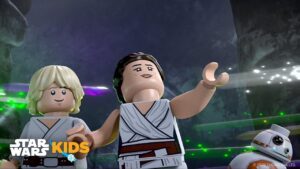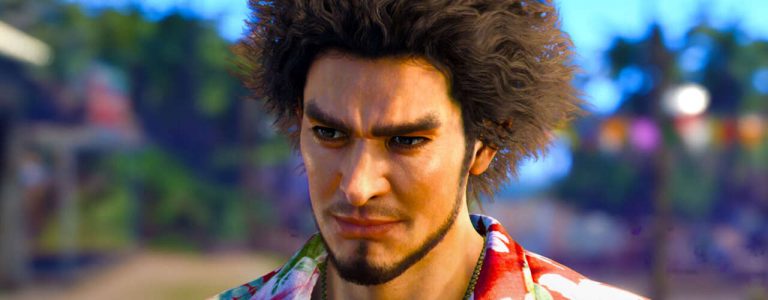
There’s an inherent goofiness to Transformers that’s impossible to avoid. We’re talking about big robots from space that transform into Volkswagons and Camaros and fighter jets. Bumblebee doesn’t shy away from that–it fully embraces the fun silliness. But that’s not even the best part about this movie–that would be how it actually feels mostly like a 1980s Spielberg adventure movie, with notes of John Hughes sweetening the mix.
Those influences aren’t subtle–the E.T. vibe is real, especially when Hailee Steinfeld’s character, Charlie Watson, first encounters Autobot B127 as a scared alien creature hiding in the corner of her garage. And there are multiple extremely literal Breakfast Club gags, including a throughline of Bumblebee mimicking Judd Nelson by throwing one fist triumphantly into the air, which the movie deploys in the most perfect ways. Bumblebee also has tons of fun with the music of the era–the Transformer starts the movie with a voice, on the distant planet Cybertron, before losing his vocal capabilities in combat. Charlie teaches him to use the radio to communicate, at the same time imparting her love of alternative ’80s jams. Bumblebee doesn’t care for Morrissey’s crooning at first, but dang it if she won’t instill in the robot an appreciation for The Smiths by the end.
Bumblebee begins on Cybertron, where a big, somewhat messy action scene establishes that the Decepticons have rooted out the Autobot rebellion. You really don’t need to know anything about Transformers to appreciate this–I’m sure there are some finer points for fans, but the important bit is that Optimus Prime sends Bumblebee to Earth to keep it safe and wait for the Autobots to regroup. On arrival, Bumblebee lands square on top of John Cena’s Agent Burns, some kind of high-ranking, square-jawed military type who makes it his mission to neutralize the robot-Volkswagon threat. Also, this is apparently a full reboot of the Transformers movies–Bumblebee here arrives on Earth in the ’80s, whereas I’m told Transformers: The Last Knight had him fighting Nazis during WWII (I haven’t seen a Transformers movie since the original, so who knows?).
There’s actually quite a lot of opening action before getting to Steinfeld’s Charlie, whose relationship with Bumblebee is the movie’s actual heart, and what it wisely spends most of its time on. The CGI in the Transformers movies has always seemed impressive, and Bumblebee and the Decepticons who come chasing him seem real enough, their battles punctuated by impactful thuds and scrapes. But this movie’s real trick is making Bumblebee–a large, yellow robot from space–unbelievably cute. After losing his voice and most of his memories, B127 is reduced essentially to the status of a very smart dog. He practically wags his tail at Charlie, although he can apparently understand everything she says. The movie mines a ton of comedy out of recurring bits like Bumblebee understanding the command “hide!” too literally, and trying to crouch behind cover instead of transforming back into a car like she wants him to.
Charlie herself will be intensely relatable to many viewers, whether you’re a parent who grew up in the ’80s or a kid now. She learned how to work on cars from her dad, who’s no longer around. She rebels in relatively harmless ways like walking around listening to The Smiths and wearing too much eyeliner–typical teenager stuff that her mom (Pamela Adlon) and stepdad (Stephen Schneider) patiently tolerate. She has a crappy job at Hot Dog on a Stick and a neighbor kid (Jorge Lendeborg Jr.) with a crush on her, but all she really wants is to get the car she and her dad were working on up and running. As a character, she doesn’t rely too much on tropes, and she’s extremely easy to root for.
Cena’s Agent Burns isn’t quite the villain, which is good, because Cena is too lovable to hate. The WWE Superstar seems to have a blast in this movie hamming it up, throwing exaggerated salutes and barking orders at his subordinates. Cena’s proved more than once that his comedic timing is gold (hello, Blockers), and Bumblebee occasionally puts it to good use, including in one exchange where he correctly points out that they probably shouldn’t trust the Decepticons because–duh–they literally call themselves “Decepticons.”
Bumblebee – Official Teaser Trailer
Please use a html5 video capable browser to watch videos.
This video has an invalid file format.
Sorry, but you can’t access this content!
Please enter your date of birth to view this video
By clicking ‘enter’, you agree to GameSpot’s
Terms of Use and
Privacy Policy
Speaking of which, the Decepticons Shatter and Dropkick have their own moments of dark humor, which often comes in the form of the latter begging the former to please just let him kill the humans already, or saying things like “I like how they pop!” after vaporizing a random bystander immediately after arriving on Earth. There’s also a very funny bit where Shatter and Dropkick kind of accidentally invent the internet? It’s great.
Bumblebee hits a perfect tone with a great mix of action, humor, and heart. The soundtrack strikes all the right chords, the action is mostly clear and easy to follow even when two massive robots are rapidly grappling and transforming into various forms, and the characters are instantly relatable, without screenwriter Christina Hodson relying too much on cliches. The homages to Spielberg, Hughes, and other ’80s filmmakers may not be subtle, but they are a lot of fun, and Bumblebee pays tribute in smart ways that don’t feel out of place or forced. Bumblebee was only Travis Knight’s second turn in the director’s chair, his first being the also excellent Kubo and the Two Strings; clearly he’s a director to watch going forward, and if Bumblebee is the new bar for Transformers movies, then the series is in for a bright future as well.
| The Good | The Bad |
|---|---|
| Good mix of action, humor, and heart | Some of the action gets messy |
| Fun homages to classic ’80s directors like Spielberg and Hughes | Rebooting the movies’ continuity might annoy some fans? |
| Bumblebee is actually cute | |
| Avoids many tropes and cliches | |
| Hailee Steinfeld is a great, relatable lead |
























